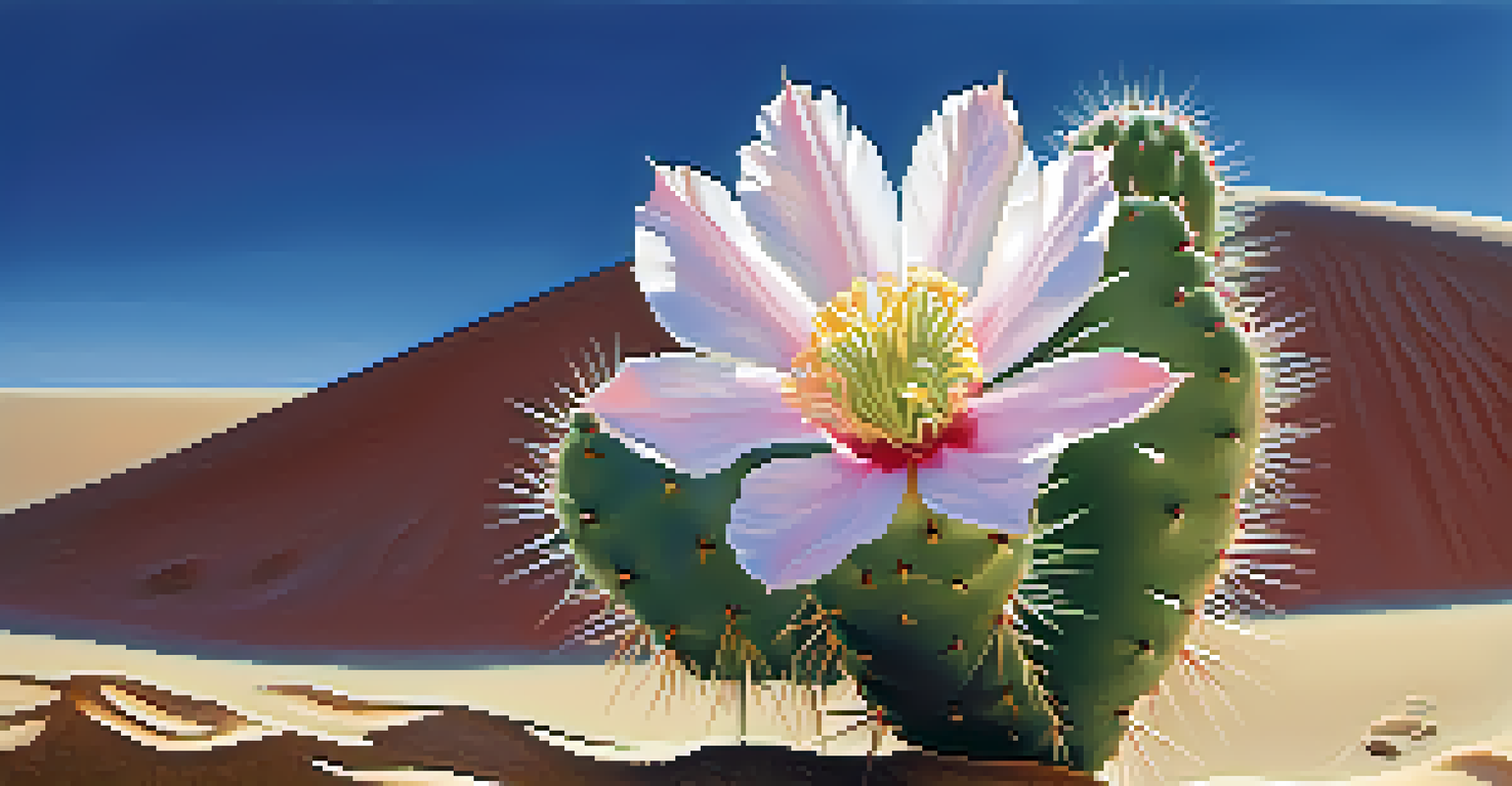Exploring Entheogens in Indigenous Cultures: A Historical Overview

Understanding Entheogens: Definitions and Context
Entheogens are substances that can induce altered states of consciousness, often used in spiritual or religious contexts. The term itself derives from Greek, meaning 'generating the divine within.' These substances have been integral in various indigenous cultures, serving as tools for healing, insight, and connection to the spiritual world.
Psychedelics are a tool for personal and collective transformation.
In many traditions, these substances are not merely drugs; they are considered sacred. Indigenous peoples often view entheogens as gifts from nature, meant to facilitate communication with the divine or the ancestors. This understanding contrasts sharply with the modern, often clinical view of such substances.
For instance, the use of peyote by Native American tribes illustrates this profound relationship. Peyote is not just a hallucinogen; for many, it represents a pathway to deeper spiritual understanding and community bonding.
Historical Roots of Entheogens in Indigenous Practices
The historical use of entheogens can be traced back thousands of years across various cultures. Archaeological evidence suggests that plants like psilocybin mushrooms and ayahuasca have been utilized in rituals for millennia. These substances often play a pivotal role in the rites of passage, healing ceremonies, and community gatherings.

Indigenous cultures have long understood the importance of these substances within their social and spiritual fabric. For example, the Mazatec people of Mexico have used psilocybin mushrooms in their healing practices, believing they facilitate communication with the spiritual realm.
Entheogens as Sacred Tools
Entheogens are viewed by indigenous cultures as sacred substances that facilitate spiritual connection and healing.
Such historical depth shows that the relationship between humans and these substances is not new; it's rooted in a profound understanding of nature and consciousness that has been passed down through generations.
The Role of Entheogens in Healing Practices
Entheogens have often played crucial roles in healing practices among indigenous cultures. Many tribes believe that these substances can help diagnose and treat ailments by revealing underlying spiritual issues. This holistic approach to health emphasizes the interconnectedness of body, mind, and spirit.
Indigenous wisdom is not a relic of the past; it is a living practice that informs our future.
Take the Shipibo-Conibo people of the Amazon, for example. They use ayahuasca not only for its psychoactive properties but also as a means to connect with spirits who guide the healing process. The experience can lead to revelations about one's health and path in life.
This practice underscores a broader theme: the understanding that healing transcends the physical realm, reaching into spiritual dimensions that many modern medical practices often overlook.
Entheogens in Rituals: A Pathway to Spiritual Connection
Rituals involving entheogens are often deeply symbolic and integral to the cultural identity of indigenous peoples. These ceremonies can serve as communal experiences that strengthen social ties and reinforce shared beliefs. The act of consuming these substances together fosters a sense of unity and collective consciousness.
For example, the Inca civilization revered the coca leaf, using it in various rituals to honor their deities and ancestors. The ceremonial chewing of coca leaves was not just about the mild stimulant effects; it was a way to connect with the divine and the natural world.
Cultural Significance and Respect
The use of entheogens embodies the cultural narratives of indigenous peoples, emphasizing the need for respect and understanding in their use.
Such practices illustrate the multifaceted roles entheogens play in rituals, acting as bridges between the material and spiritual realms, as well as between individuals within the community.
Cultural Significance of Entheogens in Indigenous Beliefs
The cultural significance of entheogens cannot be overstated, as they often embody the values and cosmologies of indigenous peoples. These substances are woven into the fabric of cultural narratives, symbolizing a connection to ancestors and the Earth. They are seen as sacred tools that facilitate a deeper understanding of existence and consciousness.
For instance, in many Amazonian tribes, the use of ayahuasca is not just a practice; it's a cultural cornerstone that reflects their worldview and relationship with the environment. It teaches respect for nature and emphasizes the importance of community and spirituality.
This highlights a crucial point: entheogens are not merely substances; they are cultural artifacts that carry profound meanings and teachings that have endured through time.
Modern Perspectives: Entheogens in Contemporary Indigenous Life
In recent years, there has been a resurgence of interest in entheogens, both within and outside indigenous communities. This revival often comes with a renewed emphasis on traditional practices and the wisdom embedded within them. Many indigenous groups are reclaiming their rights to use these substances in ways that honor their heritage.
For example, the Native American Church legally uses peyote in their ceremonies, reflecting a blend of traditional beliefs and modern legal frameworks. This highlights the ongoing struggle for cultural preservation amid changing societal attitudes.
Modern Challenges and Adaptations
As interest in entheogens grows, indigenous communities face challenges related to cultural appropriation and legal recognition while striving to preserve their traditions.
Moreover, the increasing interest in entheogens among non-indigenous populations raises questions about cultural appropriation and respect for indigenous knowledge. It underscores the need for dialogue and understanding between cultures regarding the use of these sacred substances.
Challenges and Controversies Surrounding Entheogen Use
The use of entheogens is not without its challenges and controversies, especially as interest grows among Western societies. Issues of cultural appropriation often arise, with concerns that the sacred practices of indigenous peoples may be misrepresented or commodified. This raises ethical questions about who has the right to use these substances and in what context.
Moreover, the legal landscape surrounding entheogens is complicated and often fraught with misunderstanding. While some countries are beginning to recognize the therapeutic potential of these substances, indigenous communities frequently face legal hurdles that hinder their traditional practices.

This tension creates a complex dialogue about respect, rights, and the future of entheogen use. It's essential to approach this topic with sensitivity and an awareness of the historical injustices faced by indigenous peoples.
Looking Ahead: The Future of Entheogens in Indigenous Cultures
As we look to the future, the role of entheogens in indigenous cultures will continue to evolve. There is a growing recognition of the importance of preserving traditional practices while also adapting to contemporary challenges. Indigenous communities are increasingly finding ways to integrate their sacred rituals with modern understandings of health and wellness.
Education and awareness play crucial roles in this transition. By sharing knowledge about the cultural significance of entheogens, indigenous peoples can advocate for their rights and the preservation of their traditions in a rapidly changing world.
Ultimately, the future of entheogens lies in a respectful, collaborative approach that honors indigenous wisdom while also addressing the interests of broader society. This balance will be key to ensuring that these sacred substances are used appropriately and ethically.